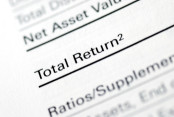One of the most common pitfalls for investors is their tendency to chase returns in the market; that is to say, many investors are prone to being lured by “hot” names on Wall Street that are making big gains, as opposed to focusing on the “out of favor,” high-quality companies that may be due for a rebound.
Although impractical, this tendency is a reality and is even somewhat understandable. After all, rising prices inspire excitement and make us feel like we’re a part of the action on Wall Street; ultimately, however, this emotion-driven approach is less than ideal for investors looking to build a solid track record over the long-haul [see also A Contrarian Approach to Dividend Investing: Low Price-to-Book Strategy].
The tougher, and arguably more ideal approach, entails searching for, and actually buying, fundamentally-sound dividend stocks that happen to be underpriced at the moment. Make no mistake, like many feats in the investing world, this one is also easier said than done. As such, below we’ve outlined a general step-by-step guide meant to aid and teach investors how to find undervalued stocks.
Step 1: Define Your Objective
Before you can go bargain shopping, you need to know what you’re looking for, otherwise you might get blindsided by the plethora of opportunities that are available in the market at any one moment. It’s tough, but necessary, to have an objective in mind before you actually begin to search around for undervalued stocks because it will help you manage the position in the future. Generally speaking, you will likely go after one of these two objectives:
- High-Yield: If your portfolio is starving for dividends, you will likely be drawn to stocks that boast a high-yield. There’s nothing wrong with this objective, but be careful not to get caught in a dividend trap if you do choose to pursue high-yield stocks trading at bargain prices.
- Consistency: If you prefer stability, you will probably go after stocks that boast impressive dividend growth track records that happen to have fallen on hard times recently. For starters, this means focusing on beat-down companies that have been consistently raising their distribution for the past 25 or 10 years in a row.
Knowing why you are buying a stock is important because it will help you get out of the security if the trade starts to steer away from your objective. In the case of high yield stocks, you can sell some of your stake as soon as the security’s yield comes down and is in-line with the rest of its peers; in the case of consistent payers, you may sell your stake if a company breaks its track record and is forced to cut or suspend its distribution [see also 6 Signs of Unsustainable Dividend Yields].
Step 2: Set Your “Safety Net” Criteria
After you have an objective in mind, you need to define your “safety net” criteria. That is to say, you must set some standards for yourself when bargain shopping. In other words, you want to focus on fundamentally-sound companies that also happen to be trading at a discount; you don’t want to just buy beat down stocks because they are cheap, they must also meet other desirable criteria.
When using the Dividend.com Screener, here is some common criteria to consider as you embark on your search for bargains:
- Market Cap: If you’re a conservative investor and/or nearing retirement, it probably makes sense to focus only on large cap securities since they tend to offer a more reliable current income stream than their smaller cap size counterparts. On the other hand, more risk tolerant investors may want to consider mid and small cap stocks since they stand to offer more lucrative growth potential. Whatever the case may be, setting a market cap criteria for yourself is one easy way to narrow down the universe of securities from which will make your selection.
- Dividend Payout History: For those pursuing high-yield stocks, this criteria may be irrelevant since you’re likely willing to take on more risk in the first place. But for anyone else, making a selection here can help to narrow down your shopping list to only the most fundamentally-sound companies since you will be excluding firms that have had to cut their distribution during the most recent financial crisis.
- DARS: The DARS set of metrics can further help you exclude firms that don’t meet your standards. For example, if you’re looking for stocks that boast an attractive yield, you can use the “overall yield attractiveness” slider and set your criteria so you’re not left scanning through low-yielding companies; likewise, you can use any of the other metrics to further narrow down your list and ultimately make the security selection process easier since you won’t be intimated by the sheer number of choices available at your fingertips.
Ultimately, the more criteria you define in the screener, the narrower your shopping list will be since you’re layering on more “safety nets” for yourself [see also Top 10 Myths About Dividend Investing].
Step 3: Screen, Research, Narrow Down, and Repeat
After you define your objective, set your criteria, you have to click on the “Find Dividend Stocks” button and view the results. From there, you might end up re-tweaking your criteria depending on the number of stocks that made your cut; if you were “too strict” in your criteria, you may not have a lot of choices in front of you, in which case you may want to re-define some metrics in an effort to have a longer shopping list to choose from.
Once you’re left with a good number of stocks to choose from—generally no fewer than five and no more than 20—it’s time to roll up your sleeves for some good ole fashioned research. Be sure to thoroughly investigate every security that meets your criteria and happens to be trading at a discounted price; you want to take the time to uncover any blemishes in a company before you’ve allocated capital to it.
Looking for a shortcut? Our Best Dividend Stocks List may help cut down on the research time necessary to find attractive opportunities in today’s market.
Repeat the screening and research process until you’re left with anywhere from five to 10 stocks you are certain you want to own. Next, be sure to make a watchlist for yourself and monitor these securities regularly so that great buying opportunities don’t get past you whenever a market correction comes around.
The Bottom Line
Bargain shopping in the stock market is difficult for a few reasons. First and foremost, it’s challenging to focus on “out of favor” securities because we are naturally drawn to rising prices. Second, just because a stock is cheap does not make it a great buy, because the company’s fundamental might be deteriorating. As such, the simple, but nonetheless important, steps outlined in this article should serve as a starting guide for anyone looking to find high-quality stocks trading at bargain prices.
Be sure to check us out on Twitter @Dividenddotcom.





